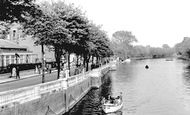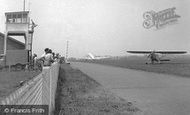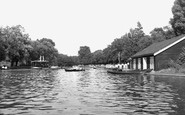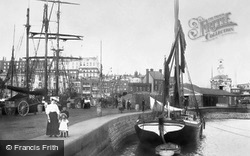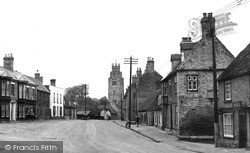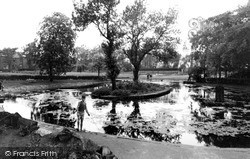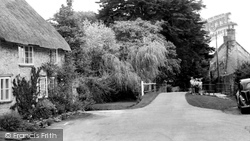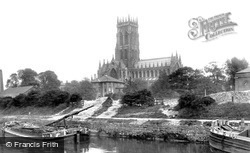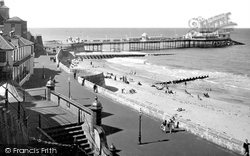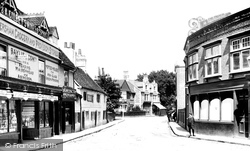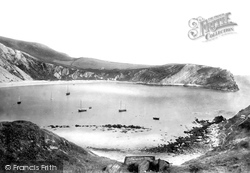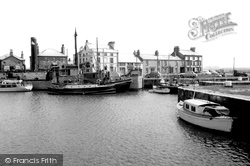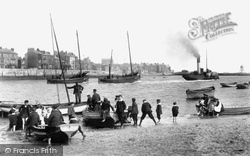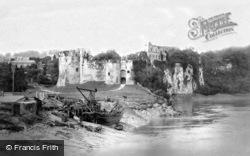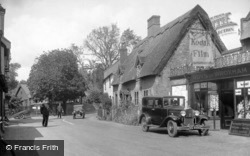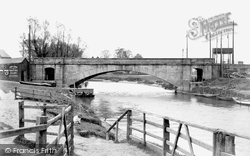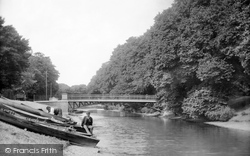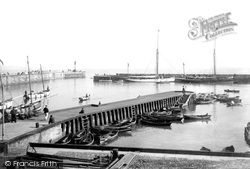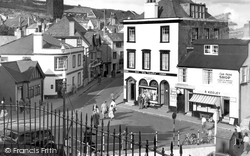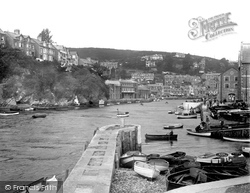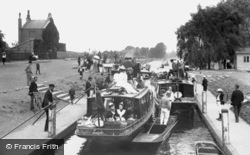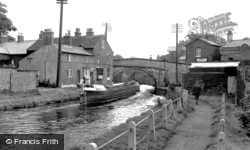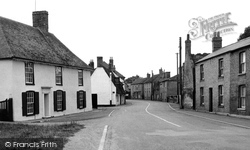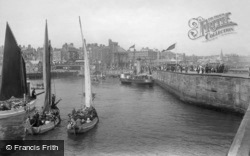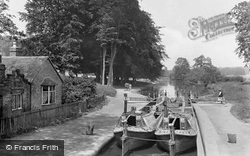Merry Christmas & Happy New Year!
Christmas Deliveries: If you placed an order on or before midday on Friday 19th December for Christmas delivery it was despatched before the Royal Mail or Parcel Force deadline and therefore should be received in time for Christmas. Orders placed after midday on Friday 19th December will be delivered in the New Year.
Please Note: Our offices and factory are now closed until Monday 5th January when we will be pleased to deal with any queries that have arisen during the holiday period.
During the holiday our Gift Cards may still be ordered for any last minute orders and will be sent automatically by email direct to your recipient - see here: Gift Cards
Places
14 places found.
Those places high-lighted have photos. All locations may have maps, books and memories.
- Coates, Lancashire
- Coate, Wiltshire (near Swindon)
- Coates, Lincolnshire
- Coat, Somerset
- Coates, Gloucestershire
- Coates, Nottinghamshire
- Coates, Cambridgeshire
- Coates, Sussex
- Coates, Lothian (near Penicuik)
- Coate, Wiltshire (near Devizes)
- Great Coates, Humberside
- Salt Coates, Cumbria
- Little Coates, Humberside
- North Coates Airfield, Lincolnshire
Photos
32 photos found. Showing results 1,281 to 32.
Maps
88 maps found.
Books
Sorry, no books were found that related to your search.
Memories
1,490 memories found. Showing results 641 to 650.
My Hullbridge In The 30s
I was born at Trend-de-Hayes off Raworth Lane in 1926 and went on to live at Coventry Corners a couple of years later at a house called 'Roycroft'. I Started school at the Riverside Juniors school, our head teacher was a ...Read more
A memory of Hullbridge in 1930 by
Boat Trip On The River
When this picture was taken my mum and dad used to live here.
A memory of Bedford by
The Carvair, Southend Airport
My dad worked for Aviation Traders at Southend Airport. He brought the Carvairs from Stansted where they were built in pieces via a transporter called 'The Queen Mary'. They were assembled at Southend and were ...Read more
A memory of Southend-on-Sea in 1958 by
My Playground White Horse Close
At the age of 11 we moved here & a group of us could always be found (gambling our pocket money at cards) on the steps in the photo. It always amazed us the number of tourists who would enter the close asking if ...Read more
A memory of Edinburgh in 1957 by
Learning To Row The Jolly Boat
As a trainee catering rating we used to bring the stores aboard by boat, rowing from the jetty to the ship - no mean feat considering how strong the currents were, if the tide was ebbing, the currents were ...Read more
A memory of Greenhithe in 1959 by
Ripponden Barkisland And Krumlin In The 50s
My first memories were of Krumlin where my mum worked at Krumlin mill as a piece burler & mender. (I remember the boiler house at the mill with the big steam engine that turned all the ...Read more
A memory of Triangle in 1953 by
Shoebury Hall Farm And Capt Townsend
I was very interested to read Alan Perry's account of Shoebury Hall Farm and Jellicoe Square. My father used to camp there during the school holidays and spoke very fondly of Captain Townsend and the general ...Read more
A memory of Shoeburyness in 1930 by
Spagetties Fisherton Street
Hey, do you remember Spaggetie, a small dumpy Italian who used to shout all the time. But what a place, all me mates would meet there, you didn't need money, he would give you a cup of coffee. Now, let's see if I can get ...Read more
A memory of Salisbury in 1969 by
Barking Park
I have many happy memories of Barking Park in the 1950s; the lake with the paddle boats; the swimming pool where my school summer holidays were spent relaxing in the sunshine; the carnival with the huge fairground once a year in the ...Read more
A memory of Barking in 1953 by
School Road And Area
I was born in School Road, just off the High Street in 1943 and lived there till 1968. I remember Inwood Park with the boating lake and the paddle boats. The paddling pool, the tennis courts and the playground. I worked for four ...Read more
A memory of Hounslow in 1951
Captions
1,640 captions found. Showing results 1,537 to 1,560.
This prettily-posed group stand in the harbour, where a spritsail barge and her boat are moored on the right. On the left, colliers are unloaded.
It soon replaced the car ferries and luggage boats. The tower of the Municipal Buildings on Dale Street dominates the sky-line to the left.
The two octagons of the tower can be seen for miles around, and were used as a beacon by those travelling by boat through Willingham Mere.
At the northern end of the Staffordshire & Worcestershire Canal, an unusual pleasure boat conversion heads towards Wolverhampton. The narrow section is a solid aqueduct over the River Trent.
Swings and slides and a roundabout were installed for youngsters at a cost of £59. The cenotaph war memorial, left, and the boating pond are still here for the residents of the town.
The biggest excitement hereabouts in recent times was when the rector's son Donald Ridler set out along the road with his home-made boat 'Erik the Red', in which he sailed alone to America to prove the
Despite their cumbersome looks, Humber keel boats—see the example in the foreground—carried up to fifty tonnes of cargo, were extremely manoeuvrable, could sail close to the wind, and could
This small esplanade at East Beach leads from the pier and passes the gangway where the fishermen launch and land their boats. This area is illuminated by beautiful, ornate lamp posts.
Henry III ordered the Keeper of Windsor Forest to deliver to Andrew, Sergeant of Caversham, one good oak to make a boat for ferrying poor people over the water of Caversham.
As well as the small local fishing boats pictured here, it was also a popular destination for the Victorian paddle steamers from nearby Weymouth, which had specially strengthened bows to enable the
Wealthy mill owners and industrialists found it handy to leave their boats in the shelter of the dock or the canal basin, and leisure became more and more a source of income for Glasson Dock.
The crews of the fishing boats prepare to hoist sail once they have cleared Hartlepool.
Goods were taken by boat and barge from Chepstow up the Wye as far as Hereford. However, it was not all work here—annual regattas were also held on the river.
In the summer months it is thronged with pleasure boats, and all is bustle and noise. Here village policemen are directing the summer traffic.
We can see a steam launch and the cabin of a pleasure boat builder on the left of the bridge.
The Royal Military Canal was constructed in the early 19th century; its purpose was to transport military personnel along the most vulnerable stretch of Kent's coast in the event of a French
The collection of moored open boats lying inside the jetty, and a few other small craft, make a strong contrast with the crowded waters inside an obviously busy harbour in the previous
Second left is the Pilot Boat Inn, where the publican's dog, Lassie, licked back to life one of the sailors from the battleship HMS 'Formidable' on 1 January 1915.
The man in the boat alongside the slipway holds her steady, making it easier for his lady passenger to disembark. F r a n c i s F r i t h ' s P i c t u r e s q u e H a r b o u r s
In his comic novel 'Three Men in a Boat', Jerome K Jerome vividly describes such a scene as this.
An empty pair of boats (the one in front is the 'Clio') head towards Manchester, probably to collect coal. It is unusual that the butty has no steerer, although the tiller is in place.
The experiment was performed using three boats with masts of equal height moored along the length of the river.
A bracing north-easterly catches flags and furls the lugsails of three packed boats entering harbour.
Cassiobury Park trees, just beyond the keeper's cottage, the barge horse and his female driver enjoy a brief rest while waiting for the Iron Bridge lock to fill so that the gaily painted butty boats
Places (14)
Photos (32)
Memories (1490)
Books (0)
Maps (88)

